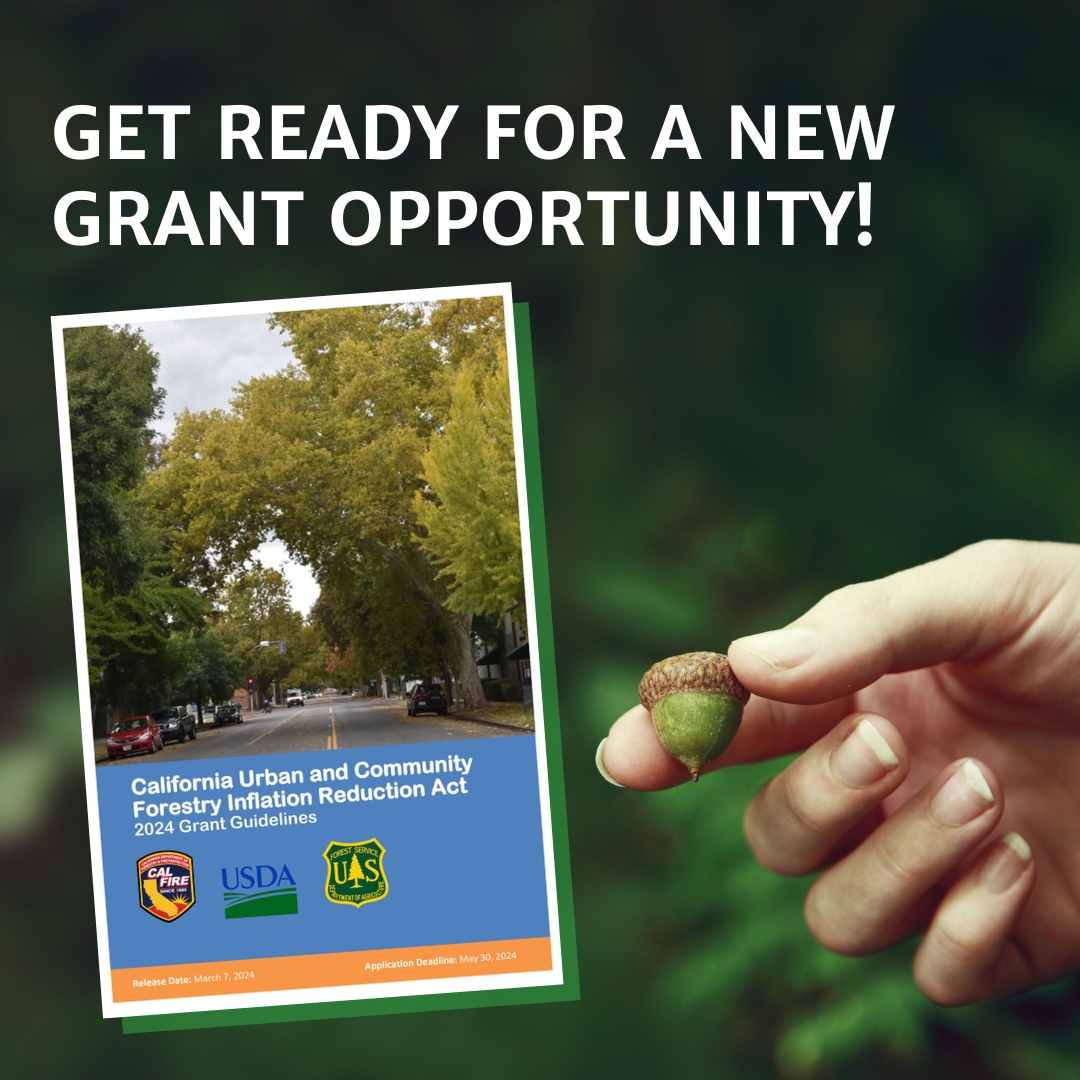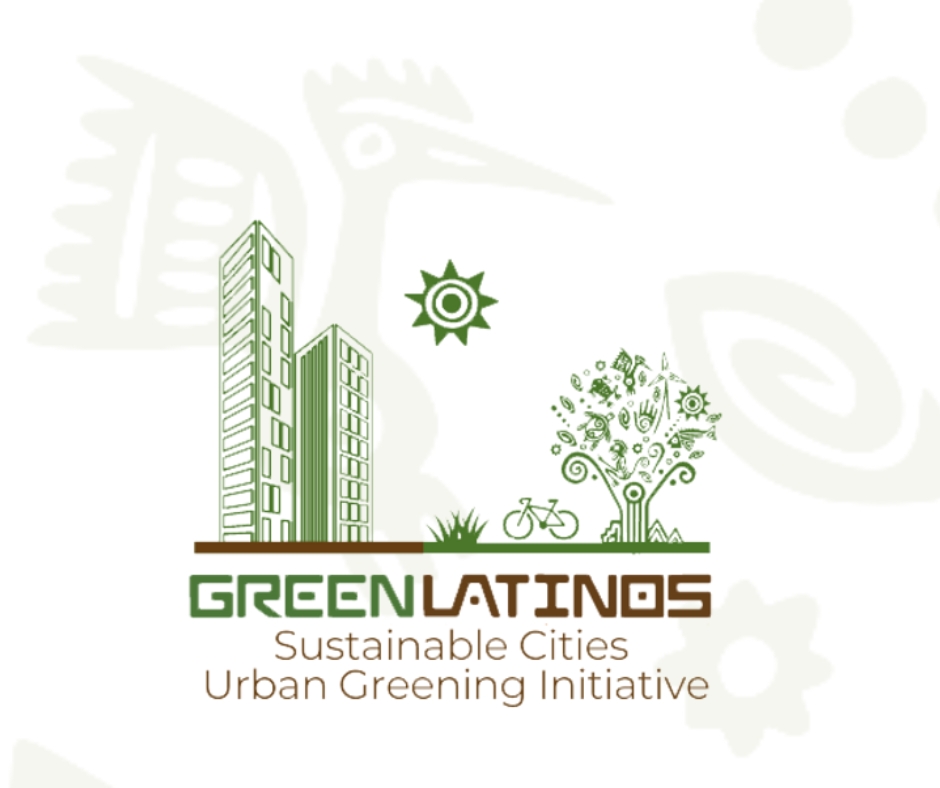Blooming Branches: Springing into Action
Happy Spring,
Spring is in full swing, and our city streets are bursting with color as trees begin to bloom and flush out. It’s a sight to behold and a reminder of the beauty of nature all around us.
Additionally, it is a time when proper tree care demands attention, and we consider pruning our trees. It is essential that this is done correctly. In our featured article, we address the implications of incorrect pruning techniques, particularly tree topping, which often leads to long-term decline in tree health.
Speaking of tree health, the Invasive Shothole Borer (ISHB) has been detected in a new area of California, the Bay Area. CaUFC’s regional council in that area, the Bay Area Urban Forests Ecosystem Council, spring to action and held an event on March 14 about detection, monitoring, and managing this threat to our trees.
This time of year is also perfect for tree-spotting! Whether it’s noticing the timing of blossoms or how quickly they fade – looking at you Saucer magnolia – or the variety of colors and shapes, there’s always something new to discover about the trees in our community.
Many of us have heard of forest bathing and are aware of the restorative benefits of being in, or just looking at nature. With spring blooms bursting forth, what colors do you find the most relaxing? What flower colors make you feel optimistic? Did you know that research into floral color is gaining attention, particularly in relation to therapeutic landscapes?
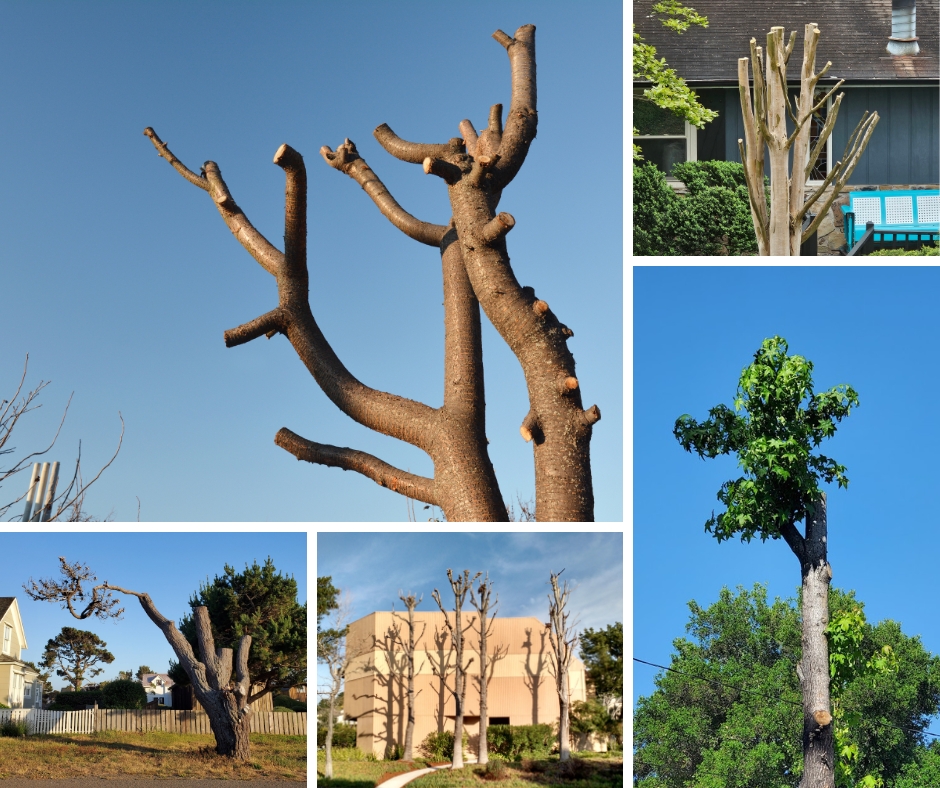
Avoiding Tree Topping: Nurturing Healthy Growth Through Proactive Practices
In the realm of tree care, few practices are as controversial and potentially harmful as topping and tipping. These methods, often employed with good intentions, can wreak havoc on the health and vitality of trees. In this article, we’ll delve into what topping and tipping entail, the detrimental effects they have on trees, and why embracing proper pruning techniques is essential for fostering strong, resilient growth.
Defining Topping and Tipping
Topping and tipping are both forms of drastic pruning that involve removing large portions of a tree’s canopy. While the terms are sometimes used interchangeably, they differ slightly in their execution:
Topping: This involves indiscriminately cutting back the uppermost branches of a tree to reduce its overall height. It often results in the creation of stubs, leaving the tree disfigured and vulnerable to disease and decay.
Tipping: Tipping is similar to topping but typically involves removing only the terminal growth or tips of branches, rather than entire branches. While it may seem less severe, tipping still disrupts the natural growth pattern of the tree and can lead to similar negative consequences.
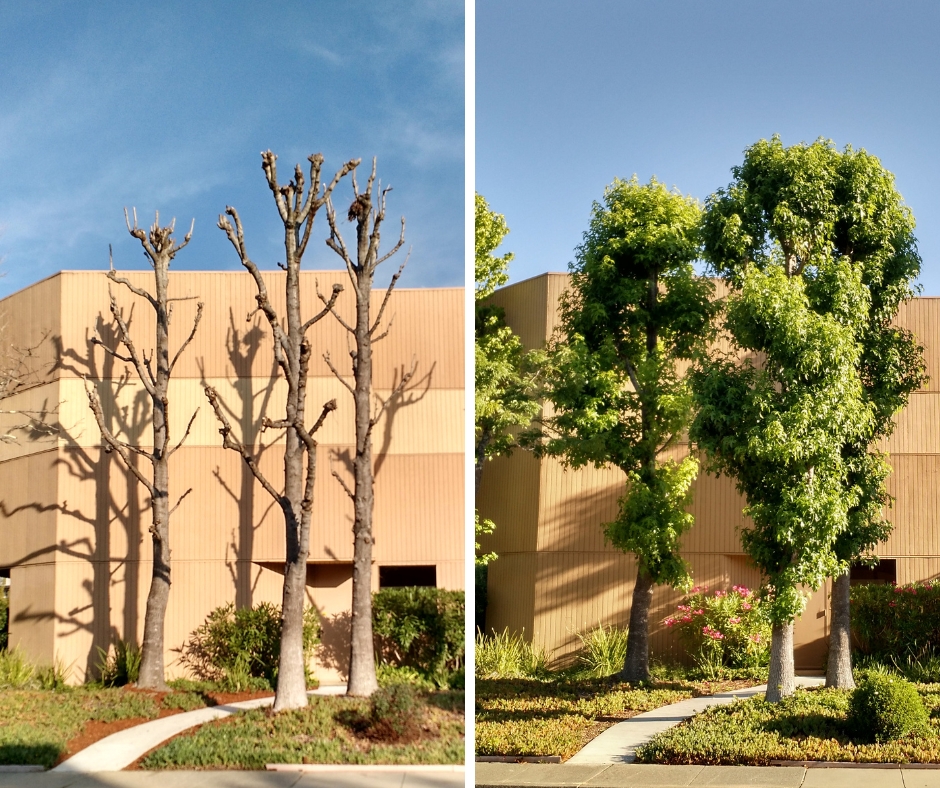
Photos: (D Etheredge CC BY-NC) Regrowth on heavily pruned trees outside an office building.
The Harmful Effects of Topping and Tipping
Stress and Shock: Trees rely on their canopy for photosynthesis, the process by which they produce energy. Topping or tipping removes a significant portion of this foliage, leaving the tree stressed and vulnerable to disease, pests, and environmental factors.
Increased Risk of Decay: When branches are cut improperly, they often form large wounds that struggle to heal effectively. These wounds provide entry points for pathogens and decay organisms, increasing the likelihood of rot and structural instability.
Elevated Susceptibility to Pests and Diseases: A compromised canopy makes trees more susceptible to infestations by insects and infections by pathogens. Once inside the tree, these pests and diseases can spread rapidly, further compromising its health.
Loss of Aesthetic Value: Topping and tipping can leave trees disfigured and unsightly, detracting from their aesthetic appeal and diminishing property value. What was once a beautiful, flourishing tree becomes a shadow of its former self.
Regrowth Issues: In a desperate attempt to recover from the severe pruning, trees often produce an abundance of weak, fast-growing shoots known as water sprouts. These shoots are more prone to breakage and can exacerbate the tree’s structural instability.
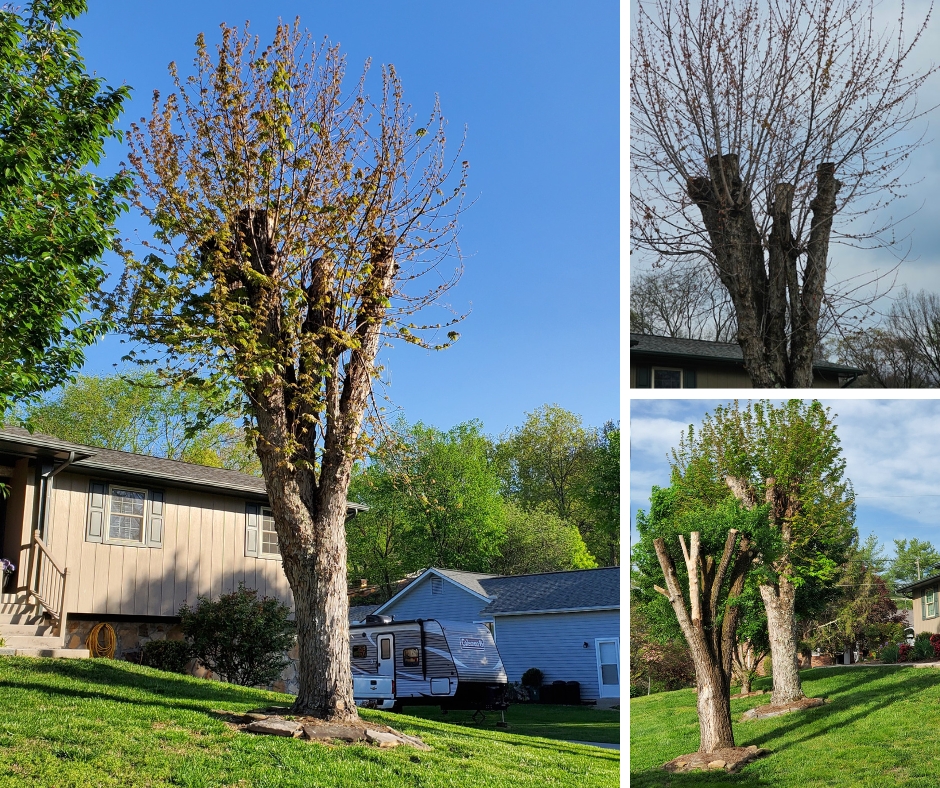
Photos: (D Etheredge CC BY-NC) These trees were topped several years ago, and have recently been removed by the homeowner following years of steady decline.
The Importance of Proper Pruning
Instead of resorting to topping or tipping, homeowners should embrace proper pruning techniques that promote the long-term health and vitality of their trees. Here are some key principles to keep in mind:
Understand Tree Biology: Before pruning, take the time to understand the biology of the tree species in question. Different trees have different growth habits and response mechanisms, so it’s essential to tailor your pruning approach accordingly.
Identify Objectives: Determine why you’re pruning the tree. Whether it’s to remove dead or diseased branches, improve aesthetics, or enhance structural integrity, having clear objectives will guide your pruning decisions.
Use Proper Tools: Invest in high-quality pruning tools and ensure they’re clean and sharp before use. Clean cuts heal faster and reduce the risk of disease transmission.
Follow Pruning Best Practices: When pruning, make cuts just outside the branch collar or at the branch bark ridge to promote proper healing. Avoid leaving stubs or creating unnecessary wounds.
Prune at the Right Time: While minor pruning can be done at any time of year, major pruning should ideally be carried out during the tree’s dormant season to minimize stress and maximize recovery.
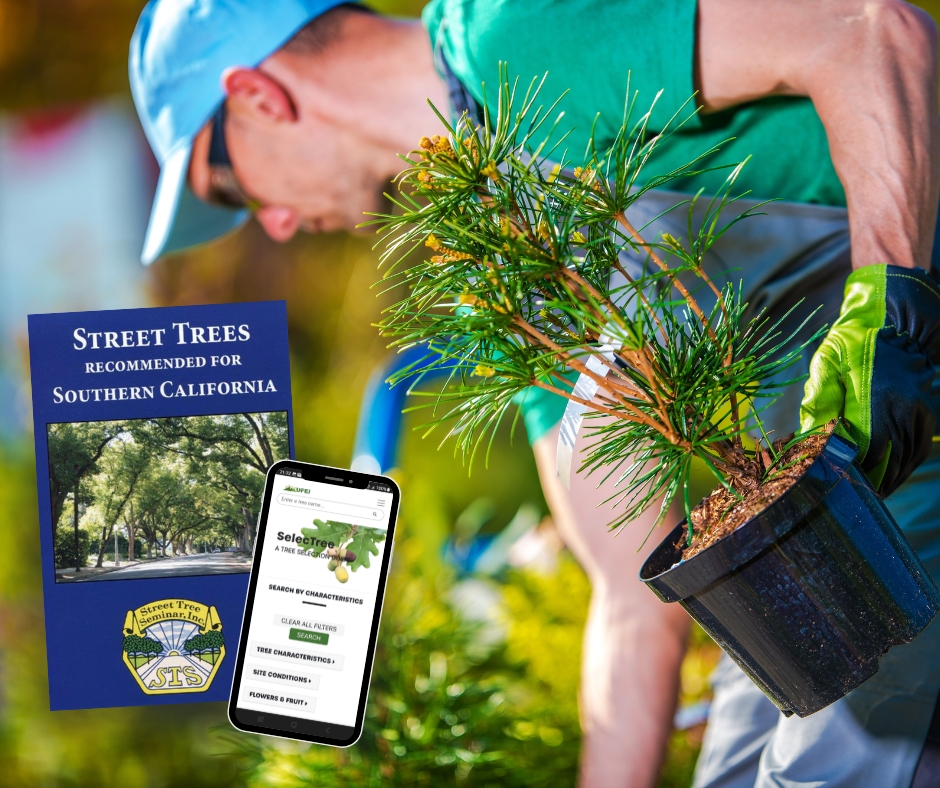
Selecting the Right Tree Species
Selecting the right tree species is crucial for ensuring long-term success and minimizing the need for drastic pruning measures. Fortunately, there are valuable resources available to help homeowners make informed decisions about tree selection:
Selectree by Cal Poly San Luis Obispo: Selectree is an invaluable online resource. This comprehensive database provides detailed information on a wide variety of tree species, including their growth habits, environmental requirements, and suitability for different landscapes. Homeowners can use Selectree to research and select the perfect tree species for their specific needs and conditions.
Street Trees Recommended for Southern California: Produced and published by Street Tree Seminar, the Street Trees Recommended for Southern California guide is another valuable resource for homeowners in the region. This guide offers expert recommendations for street trees that thrive in the unique climate and conditions of Southern California. Available for purchase online, this resource provides valuable insights into selecting the right tree species for urban environments.
By leveraging these resources and taking a proactive approach to tree selection, homeowners can choose the right tree for the right place, thereby minimizing the need for future pruning and ensuring the long-term health and vitality of their trees.

Photos: (D Etheredge CC BY-NC) These trees were topped several years ago, and have recently been removed by the homeowner following years of steady decline.
Where to Find Information on Proper Pruning
For homeowners seeking guidance on proper pruning techniques, there are several reputable sources of information available:
Your Regional Council: We have seven regional councils, and some, like the Inland Urban Forest Council have produced a pruning guide, in both English and Spanish.
Arboricultural Organizations: The International Society of Arboriculture (ISA) provides educational materials and resources on tree care best practices, and you can search for a certified arborist in your area.
ISA Certified Arborists: ISA Certified Arborists are trained professionals with expertise in tree care and maintenance. While larger trees may require the services of a Certified Arborist, they can also provide valuable guidance and advice to homeowners with smaller trees.
Extension Services: Many state universities and agricultural extension offices offer resources and publications on tree care and pruning tailored to specific regions. Visit the UC Agriculture and Natural Resources website to find more Yard and Garden information. You can also search for local information, or get advice from your local Master Gardener program.
Online Resources: In addition to our own site, websites such as the Arbor Day Foundation, and TreesAreGood.org offer articles, videos, and interactive tools to help homeowners learn proper pruning techniques.
Conclusion
Topping and tipping may seem like quick fixes for overgrown trees, but the short-term benefits are far outweighed by the long-term consequences. By embracing proper pruning techniques and avoiding these harmful practices, homeowners can ensure the health, beauty, and longevity of their trees for generations to come. Remember, a well-pruned tree is a happy tree – and a happy tree enriches our lives in countless ways. So, prune responsibly and nurture our green companions with care and respect.
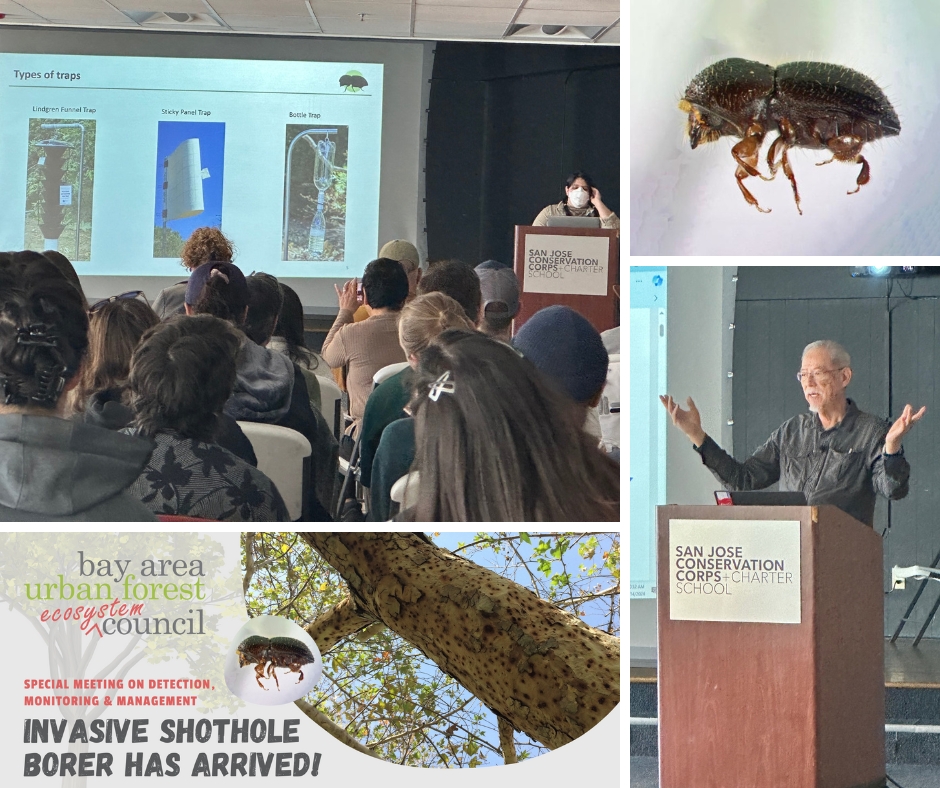
Invasive Shothole Borers in the Bay Area
The Bay Area Urban Forest Ecosystem Council hosted a day-long training and workshop titled “Invasive Shothole Borers in the Bay Area” to bring attention to the recent discovery of ISHB in San Jose. The event provided a comprehensive overview of the pests, including biology, identification, and management, along with hands-on field training. Speakers included seasoned ISHB experts from Southern California and elsewhere who provided real-world experience and examples of how to manage this pest, including John Kabashima, Hannah Vasilis, Randall Oliver, and Chris Shogren from the UC Cooperative Extension ISHB Team as well as Shannon Lynch from UC Davis and Dawn Fluharty (BAUFEC Board Member) from Target Solutions.
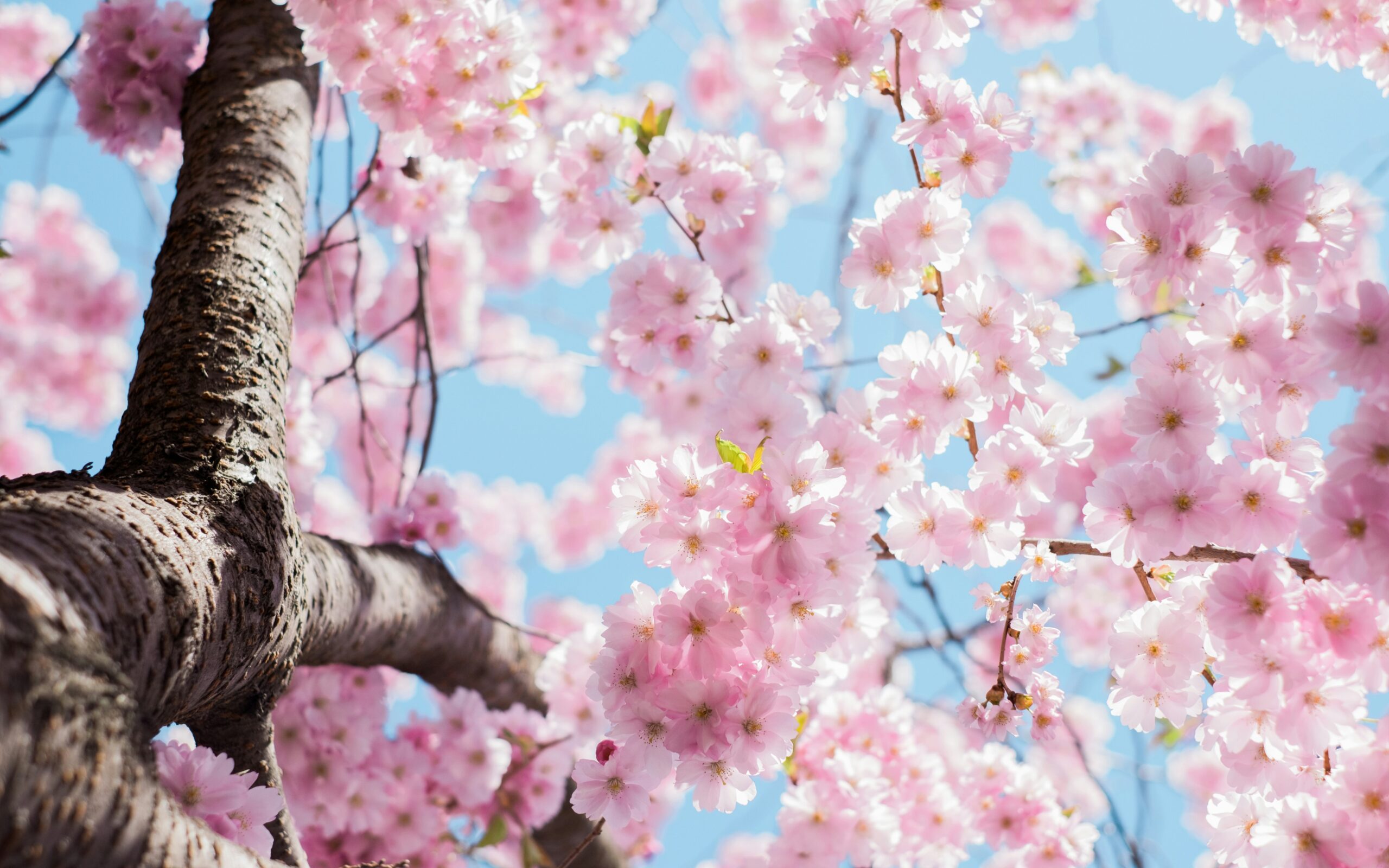
Did you know?
Did you know that flower colors can significantly impact our mental well-being? A study with 670 UK residents found that blue and white flowers were deemed most relaxing, while orange, yellow, and red flowers were deemed most uplifting. Interestingly, a respondent’s favorite color also promoted restorative effects for that individual. Moreover, non-frequent gardeners found orange and yellow more uplifting. While the study suggests that these findings may assist landscape architects in creating generic therapeutic responses when designing landscapes, we can also incorporate these results into our own natural surroundings. For instance, flowering trees, such as cherry blossoms, can bring joy and positivity to any outdoor space. Read the full paper here.
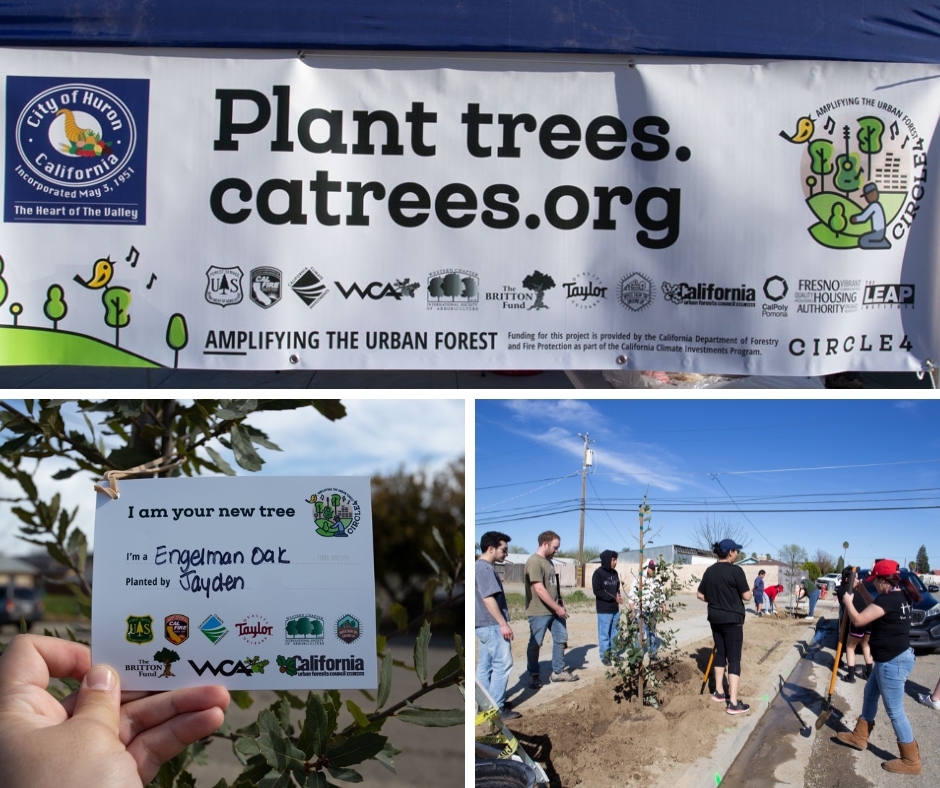
Celebrating Arbor Day
Ninety-two volunteers celebrated Arbor Day in the city of Huron by planting trees as part of our AMPlifying the Urban Forest Program funded by CAL FIRE. 2,000 trees have now been planted in almost 30 communities across California as part of this program.
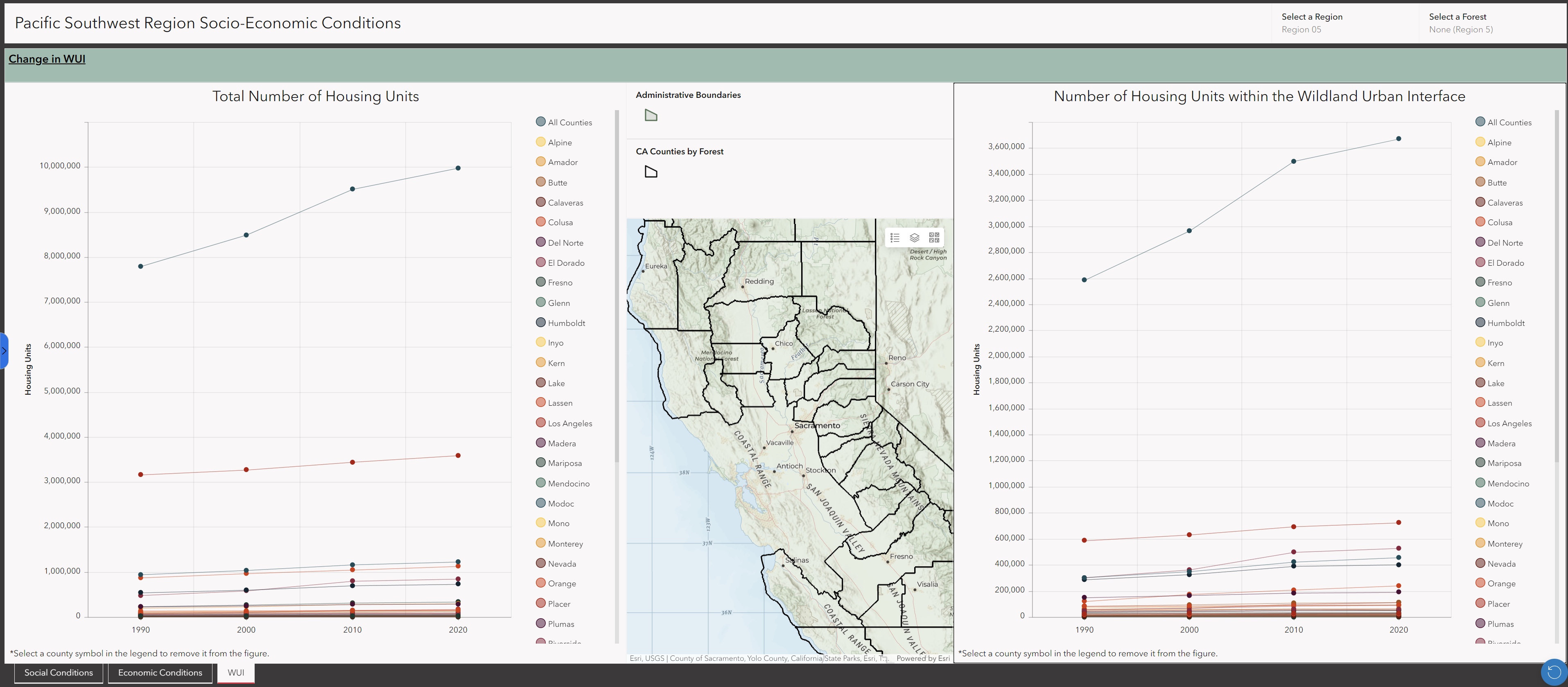
Get Interactive with National Forest Trends in California
Media Release from US Forest Service, Pacific Southwest Region
First Forest Service Interactive Web Page on Broader-Scale Monitoring Strategy Offers Helpful Maps and Data
The USDA Forest Service Pacific Southwest Region (Region 5) is publishing its first interactive website on social, economic and ecological trends for national forests in California. The site is packed with data dashboards, interactive maps, descriptive trend summaries, tables and figures.
The Region 5 Broader-Scale Monitoring Strategy explores the status and trends of 10 key areas — air quality, aquatic resources, climate change, ecological services and economic conditions, invasive species and insects/disease, vegetation, visitor use and satisfaction, wildfire, wildlife and ecological restoration.
“We’ve used all these tools to answer the Region 5 Broader-Scale Monitoring Strategy,” said Regional Monitoring Planner Stephanie Coppeto. “Many land managers, partners, and even individuals look forward to seeing trends in our national forests. For trends with interactive features, you can go broad or drill into the details as much as you like.”
The website offers the first series of results for California national forests. As part of the Forest Service 2012 Planning Rule, every region must develop a broader-scale monitoring strategy to answer questions and assist units in completing their forest plan monitoring.
Subject matter experts gather and evaluate trends in these areas using data from existing federal and state data sources. Additional results for these topics will be added to the site as they become available.
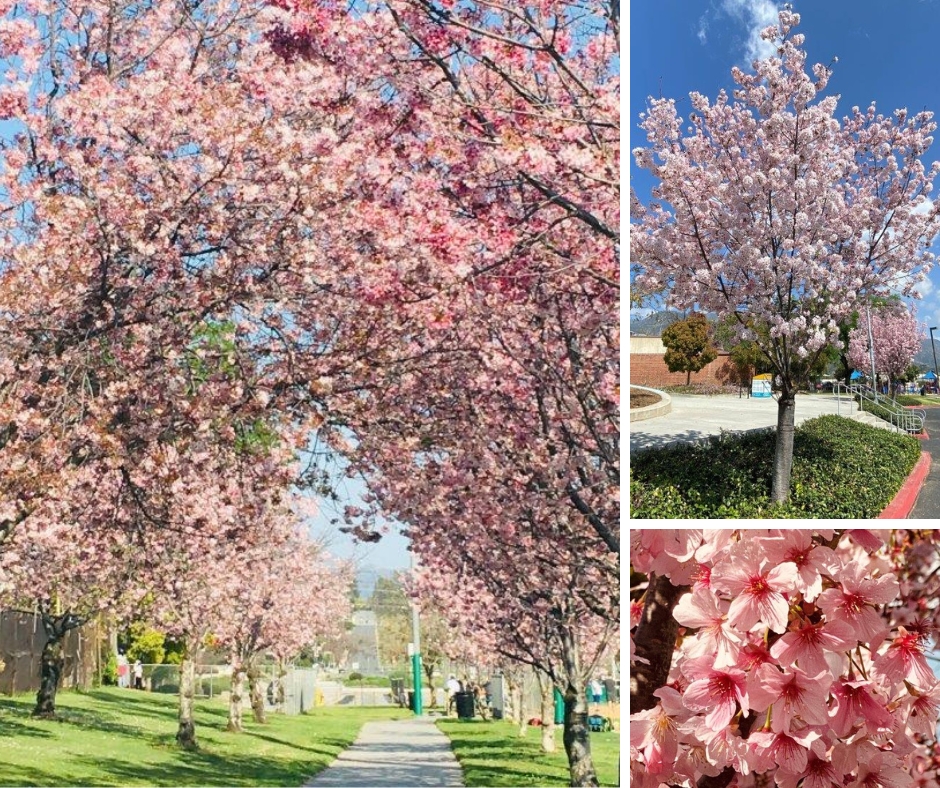
Pink Cloud Cherry Blossom Tree
© Article & Photographs by Emina Darakjy
A variety called Pink Cloud performs very well in Southern California’s milder winters. It grows 15 to 20 feet tall and as wide with a willowy round shape. The leaves are simple, alternate and toothed. The flowers have 5 petals and appear before the leaves in late March and early April.
There are many other cultivars of flowering cherry trees with blossoms ranging in color from white to rose and dark pink. These trees produce some of the most dramatic blooms during the spring that attract so many hummingbirds and bees. The bloom season unfortunately lasts only a few weeks. Most cultivars live 30 to 40 years with a few exceptions such as the ones in Washington D.C. where some of the original trees that were planted in 1912 are still alive.
Flowering cherry trees require full sun, good air circulation and a well-drained soil rich in organic matter. They also require some light pruning during the winter, and are considered drought tolerant once established.
Another variety to consider planting if pink Cloud is not available is Akebono, it has tight dark pink buds that open white, turning to a soft pink. The flowers also tend to hang on longer on the tree.
Pasadena where I live is very fortunate to have several Pink Cloud flowering cherry trees with dark pink flowers growing in Victory Park, Memorial Park and Central Park. These trees can also add a beautiful accent to any garden. The trees in Pasadena were planted in 2012 to commemorate the Centennial of when the trees in Washington D.C. were planted.
In 1912 more than 3000 flowering cherry trees, a gift from the Mayor of Tokyo Japan to the United States were planted in Washington D.C. These trees were meant to celebrate the growing friendship between the people of Japan and the United States. The sight of cherry blossoms is so spectacular people travel from all over to attend the Cherry Blossom Festival in our Nation Capitol.
In Japan the “Sakura” or cherry blossom is considered the national flower. If you are not able to make it to Washington D.C for its Cherry Blossom Festival or Japan where the tradition of celebrating the cherry blooms goes back thousands of years, you can still be dazzled by the beauty of the ones growing here in Pasadena, at Descanso Gardens, at the Huntington Botanical Gardens, or in your own garden.
Calendar of Events
Advocacy and Action: Clean & Green Pomona’s Approach to Addressing Environmental Inequities
Wednesday, April 10 | 11:45 AM — 1:00 PM
Zoom in for Learn Over Lunch with Clean & Green Pomona, part of California ReLeaf Network Members Advocacy and Action. Discover how they evolved from residents fighting pollution to a non-profit empowering community environmental advocacy. Visit California ReLeaf to learn more and become a member.
USDA Forest Service Webinar: Wildfire Effects & Recovery in Urban Ecosystems
Wednesday, April 10 | 10 – 11:15 am PDT
Join a special webinar addressing the changing demographics of urban neighborhoods due to recent wildfires in California and the Western United States. Explore science-based information on fire safety practices and structural hardening, as well as the need for guidelines on post-fire urban forest restoration and local policy making. Presented by experts from USDA Forest Service, Oregon Urban, Rural (OUR) Community Forestry, and University of California Cooperative Extension.
90th Annual WCISA Conference in San Diego
Monday, April 29 | Wednesday, May 2, 2024
Join WCISA at the 90th Annual Conference in San Diego! Keynote speaker Dr. James Clark will delve into the theme “Cultivating Competence,” exploring the importance of programs like Certified Arborist and CTSP in developing skills at both organizational and personal levels. Registration is open for this must-attend event from April 29 to May 2, 2024. Don’t miss the chance to connect with industry professionals and experts.
California ReLeaf 2024 Network Retreat
Los Angeles | May 10, 2024
The Network Retreat is the annual gathering for California’s urban forest nonprofits and community organizations committed to enhancing the health and livability of California cities through tree planting and care. Join us for peer-to-peer learning, networking with organizations statewide, and access to presentations on research, funding, and advocacy opportunities. Visit California ReLeaf for details.
Street Tree Seminar May Meeting
May 16, 2024 10:30 AM – 01:30 PM
Audubon Center at Deb’s Park
Join Theodore Payne Foundation (TPF) Executive Director Evan Meyer and Director of Horticulture Tim Becker for a tour of Los Nogales Nursery at the Audubon Center at Deb’s Park, operated in partnership with TPF. Explore native trees and plants, and learn how Southern California can enhance biodiversity and water conservation in landscaping. Visit Street Tree Seminar to register.
Wood Reuse Panel Discussion Webinar
Friday, May 17, 2024 | 12 Noon – 1 PM
Join the panel webinar on Wood Reuse on May 17, co-hosted by the Bay Area Urban Forests Ecosystem Council, Bay Area Landscape Supervisors Forum, Los Angeles/Orange County regional council, and Street Tree Seminar. Learn about the state of the wood reclamation industry, emerging technologies, and partnerships in the field. Speakers include leaders from Bay Area Redwood, Angel City Lumber, Terremoto, and Street Tree Revival.
Opportunities
CAL FIRE’s Urban & Community Forestry (UCF) Grant Program
Upcoming Funding Opportunity!
CAL FIRE’s Urban and Community Forestry (UCF) Grant Program has just released the 2024/2025 Inflation Reduction Act (IRA) Grant Guidelines. The application portal is anticipated to open on April 5 or shortly thereafter.
Applications will be accepted until May 30, 2024.
California received a state allocation of Inflation Reduction Act funds, of which $30.8 million is available for grant projects working at a community, regional, or statewide scale in this funding opportunity. The grant guidelines include information on using state-awarded Inflation Reduction Act funds to support disinvested, disadvantaged, and low-income urban communities in growing equitable access to trees and their benefits. IRA Available Grant Types:
-
Urban Forest Expansion & Improvement activities such as tree planting
-
Urban Forest Management Activities such as tree inventories & urban forest management plans
-
Urban Forestry Education and Workforce Development
-
Urban Forestry Regional and Statewide Impact
-
Urban Forest Equity Capacity Building
-
Green Schoolyards
Note: The UCF Grant Website is being updated. All documents will be available soon. Be prepared. Review the grant guidelines before the application portal opens. CAL FIRE staff is available to answer any questions about eligibility, project concepts, etc. Find your regional urban forester here.
GreenLatinos Sustainable Cities Urban Greening Initiative
GreenLatinos is allocating a total of $2,650,000 in grants to increase and revitalize greenspaces in urban Latino/a/e communities across Los Angeles, Albuquerque, and Chicago. This initiative is a program of the broader Greening America’s Cities Initiative and is funded by the Bezos Earth Fund. GreenLatinos are collaborating with projects and organizations in each city to foster the growth of urban greening projects, including parks, community gardens, and urban forests.
The initiative will support projects with developed plans, ready for implementation. Project types may involve creating new urban greenspaces, expanding existing ones, or renovating current greenspaces.
Find out more. Applications Due: April 29, 2024.







